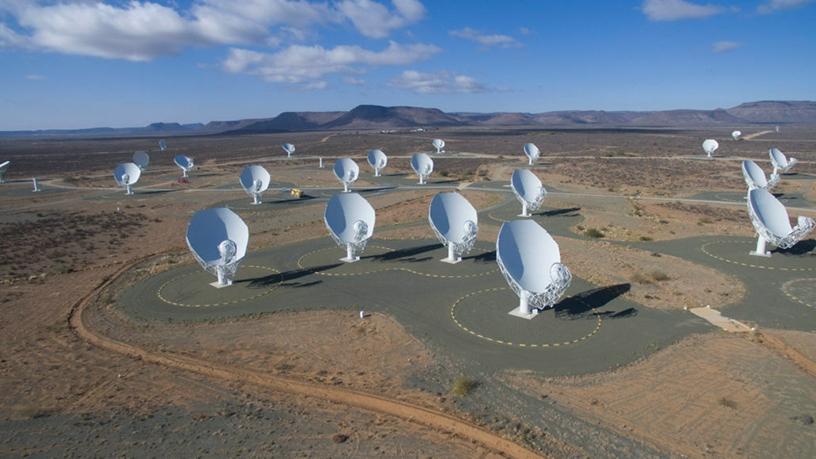
South Africa's MeerKAT radio telescope was officially launched this morning.
Made up of 64 dishes, each 13.5m in diameter, the MeerKAT array is distributed across a span of 8km in the remote area of Carnarvon in the Northern Cape. The 64 MeerKAT antennas are standing in the Karoo.
Spearheaded by the Department of Science and Technology (DST) and operated by the South African Radio Astronomy Observatory (SARAO), MeerKAT is a precursor to the larger international Square Kilometre Array (SKA).
The SKA project is being built by an international consortium that includes Canada, China, India, Italy, New Zealand, Spain, Sweden, the Netherlands and the UK, and will be co-hosted in SA and Australia. It will be built in two main phases, with construction of the first phase planned to start later this year. Some elements will be operational by 2020, with full operation under way in 2025.
When completed, SKA will be 50 to 100 times more sensitive than any other radio telescope on earth and is expected to address fundamental questions about the universe, including how the first stars and galaxies were formed.
Today's MeerKAT launch marks a significant milestone in the lifespan of the project, as it means astronomers will now be able to study the formation of the first galaxies, magnetic relations between planets, as well as details around the large-scale structure of the cosmos.
The launch event, led by DST minister Mmamoloko Kubayi-Ngubane, attracted former science and technology ministers, namely Ben Ngubane, Mosibudi Mangena, Derek Hanekom and Naledi Pandor.
Deputy president David Mabuza, also in attendance, officially inaugurated the MeerKAT radio telescope in the Northern Cape.
SARAO has indicated the radio telescope has already observed a rare burst of activity from an exotic star, which demonstrates its capabilities as a new instrument for scientific exploration.
According to SARAO, a new image that reveals detail in the region surrounding the supermassive black hole at the centre of the Milky Way has been captured using the new telescope.
"We wanted to show the science capabilities of this new instrument," says Fernando Camilo, chief scientist at SARAO.
"The centre of the galaxy was an obvious target: unique, visually striking and full of unexplained phenomena, but also notoriously hard to image using radio telescopes. Although it's early days with MeerKAT and a lot remains to be optimised, we decided to go for it and were stunned by the results."
Farhad Yusef-Zadeh from the US's Northwestern University adds: "MeerKAT now provides an unsurpassed view of this unique region of our galaxy. It's an exceptional achievement; congratulations to our South African colleagues. They've built an instrument that will be the envy of astronomers everywhere and will be in great demand for years to come."
Share